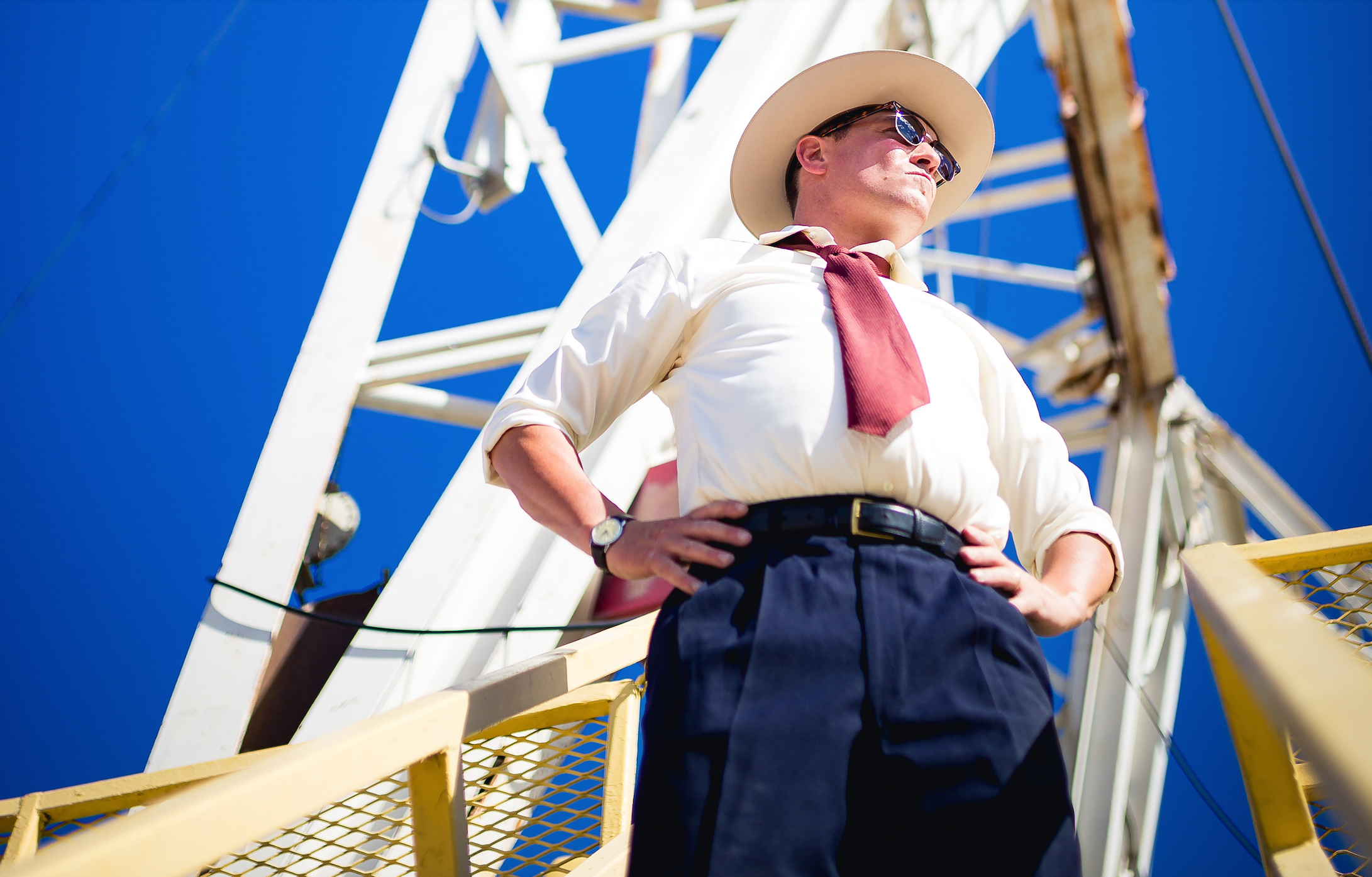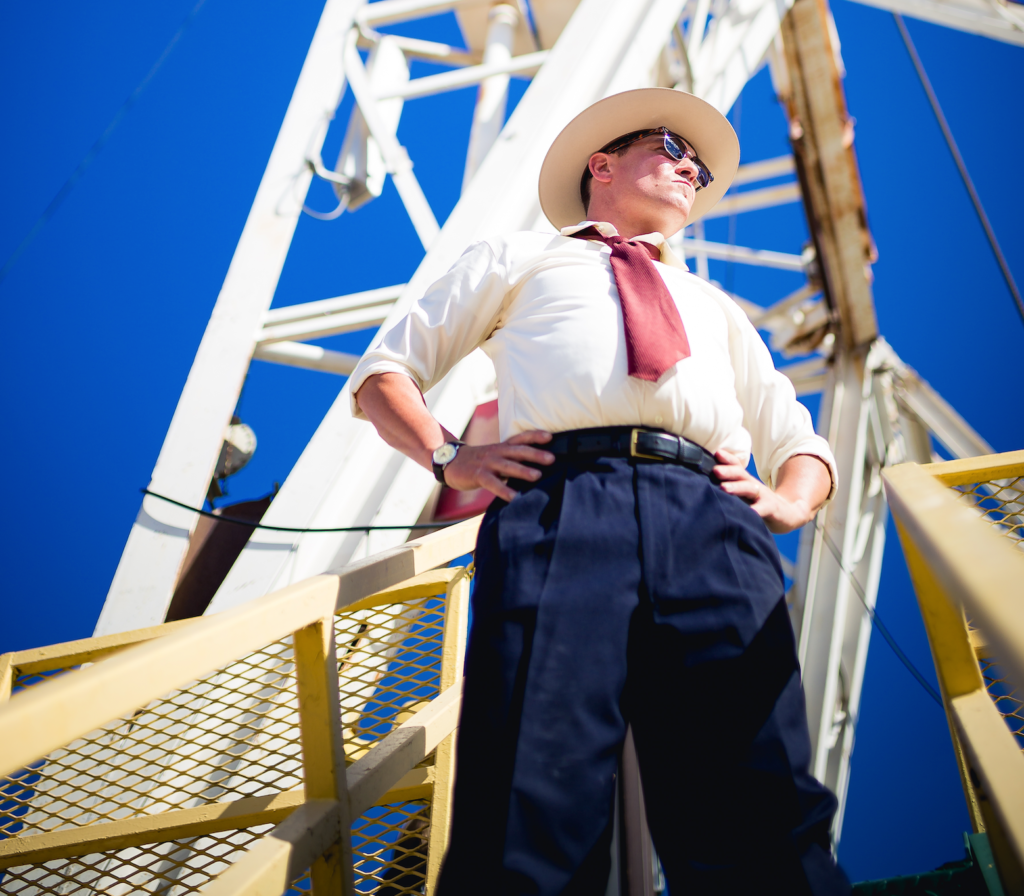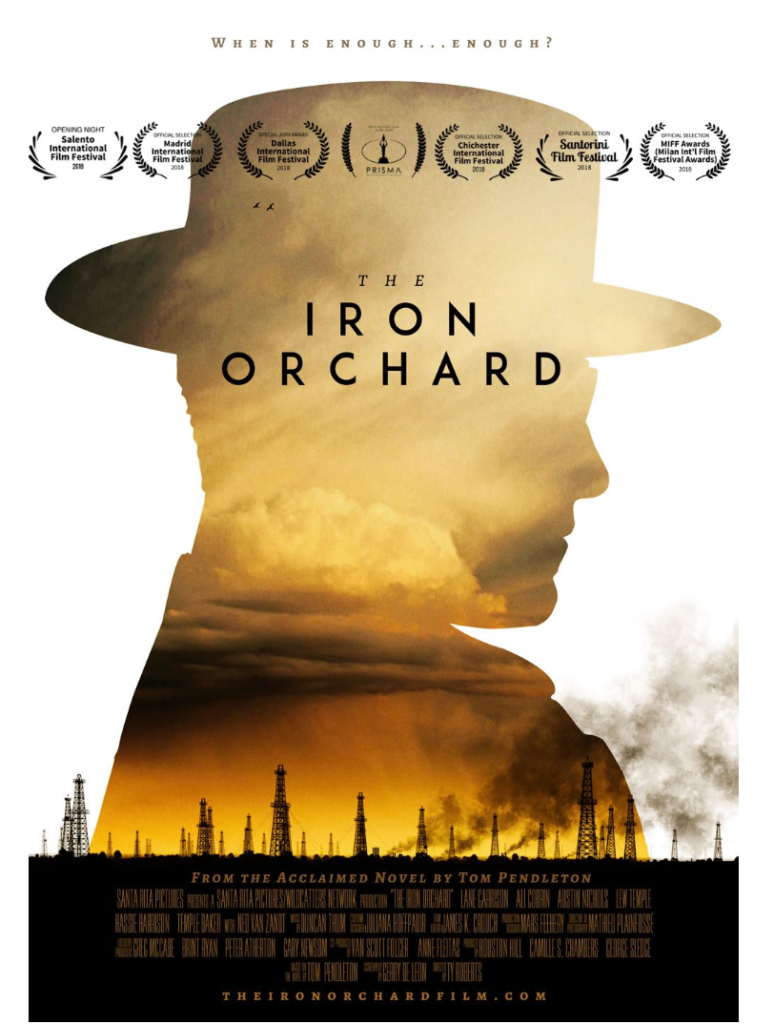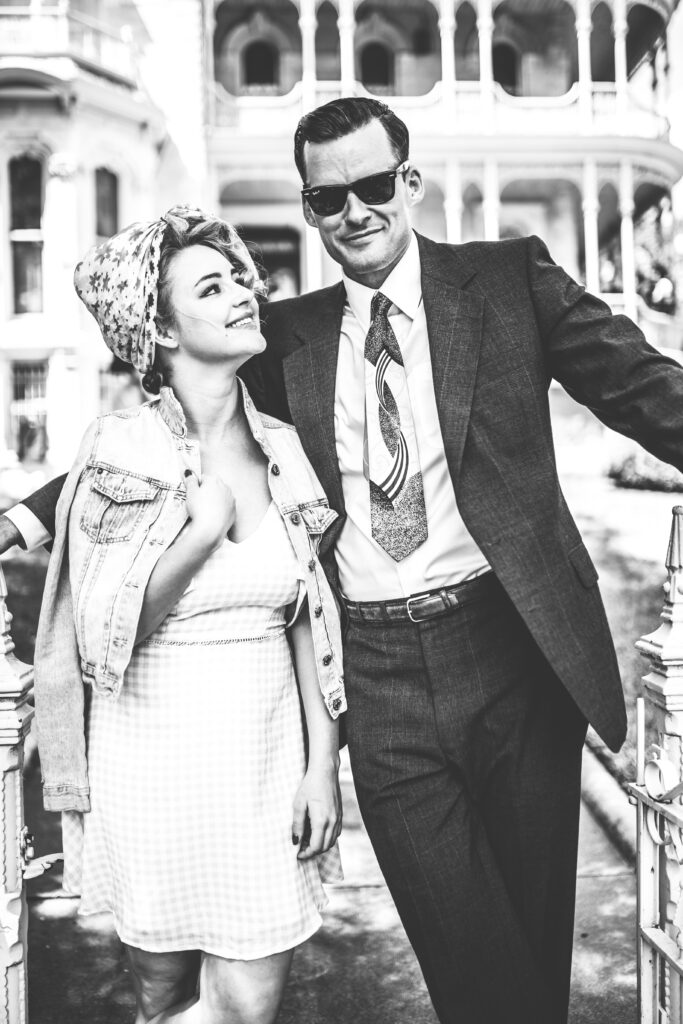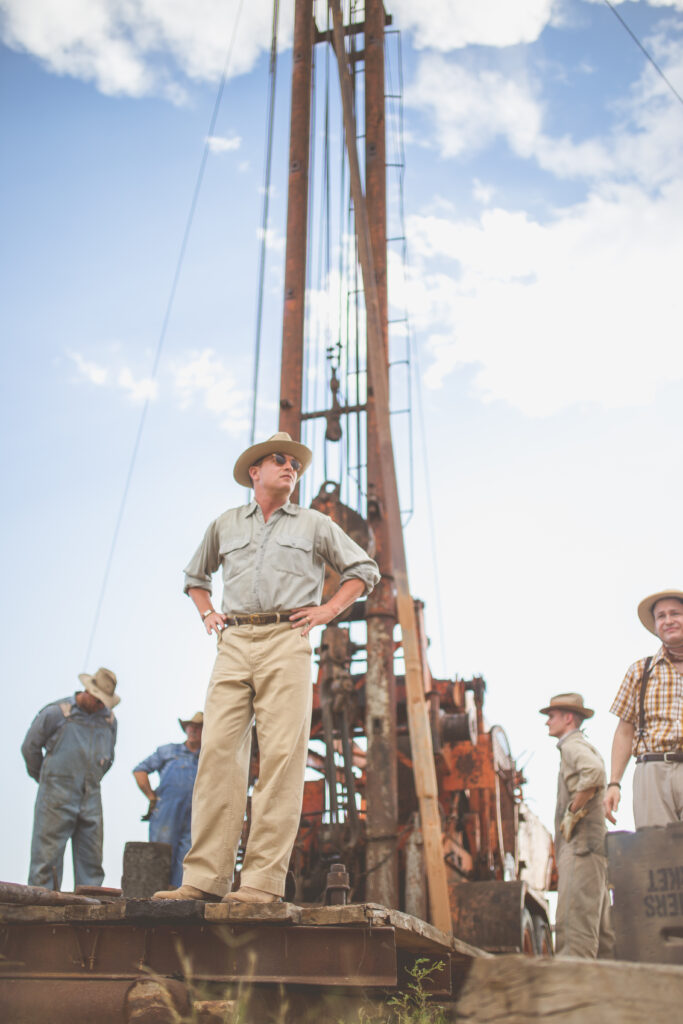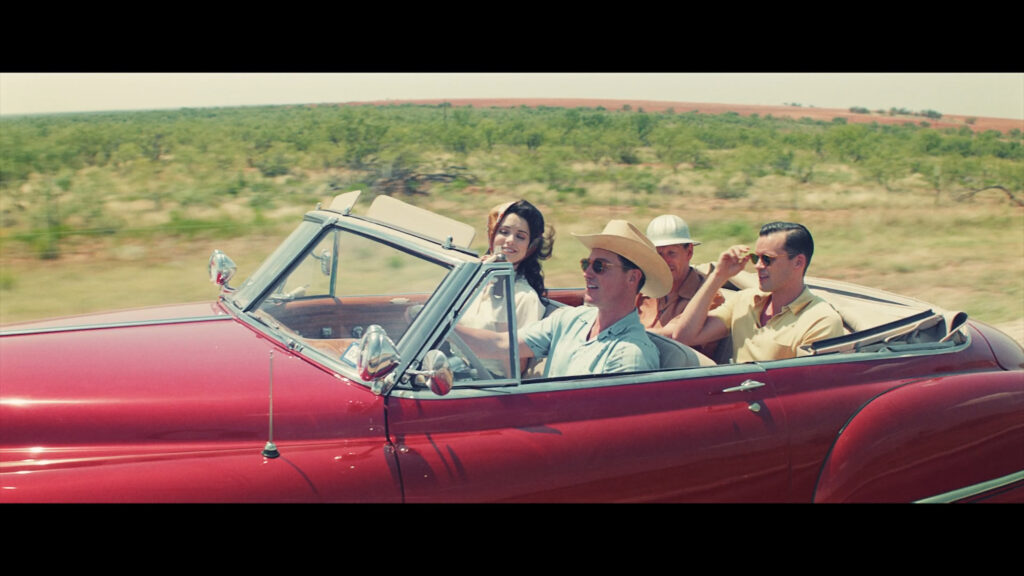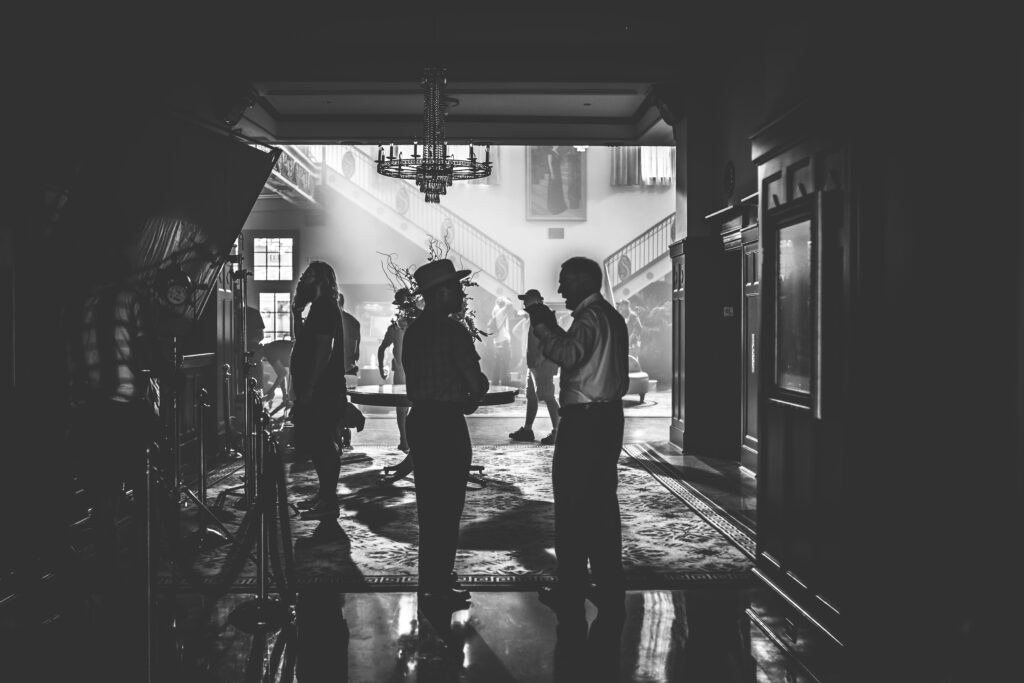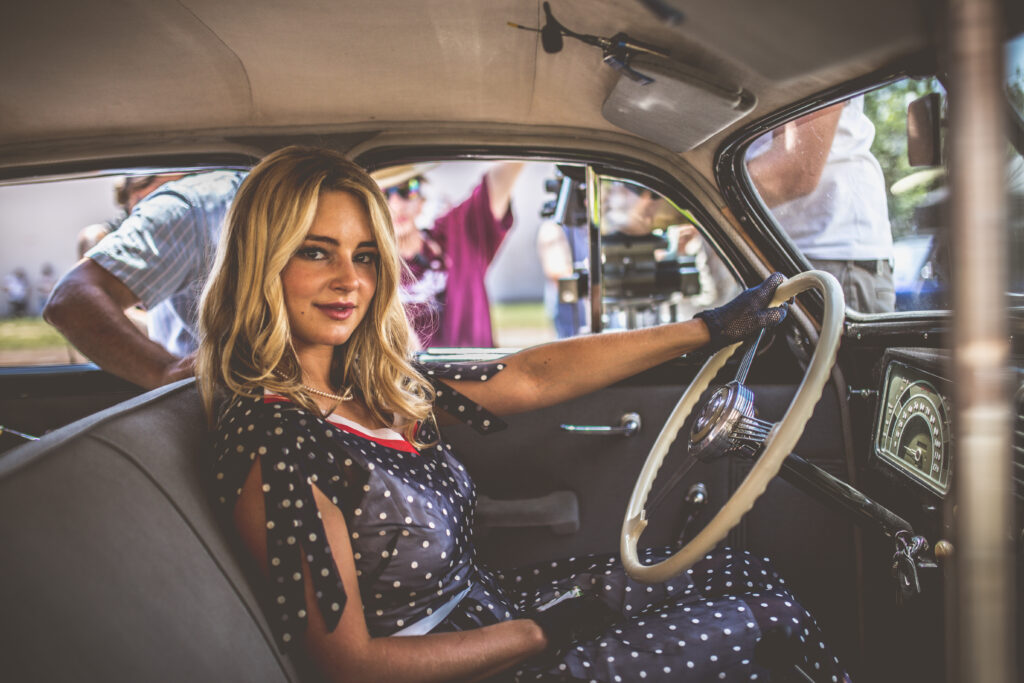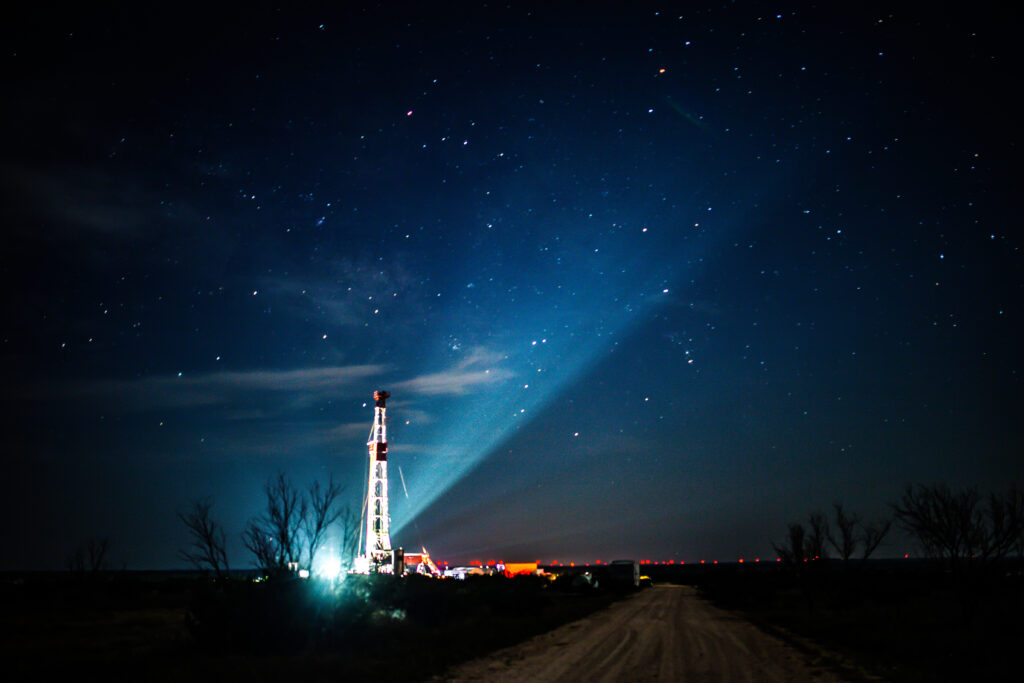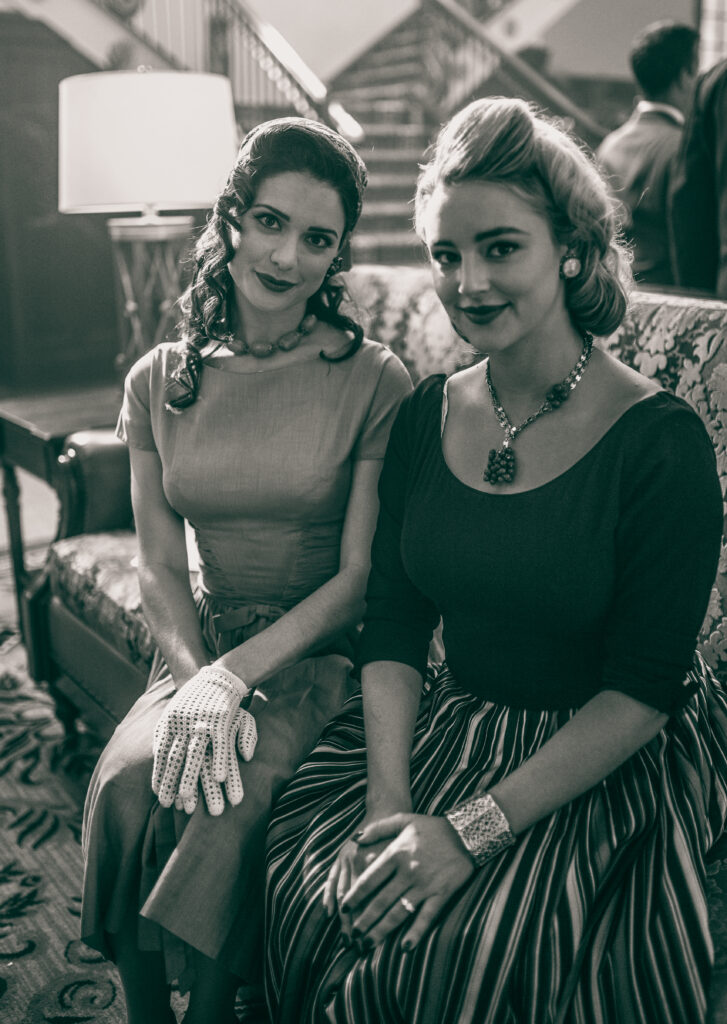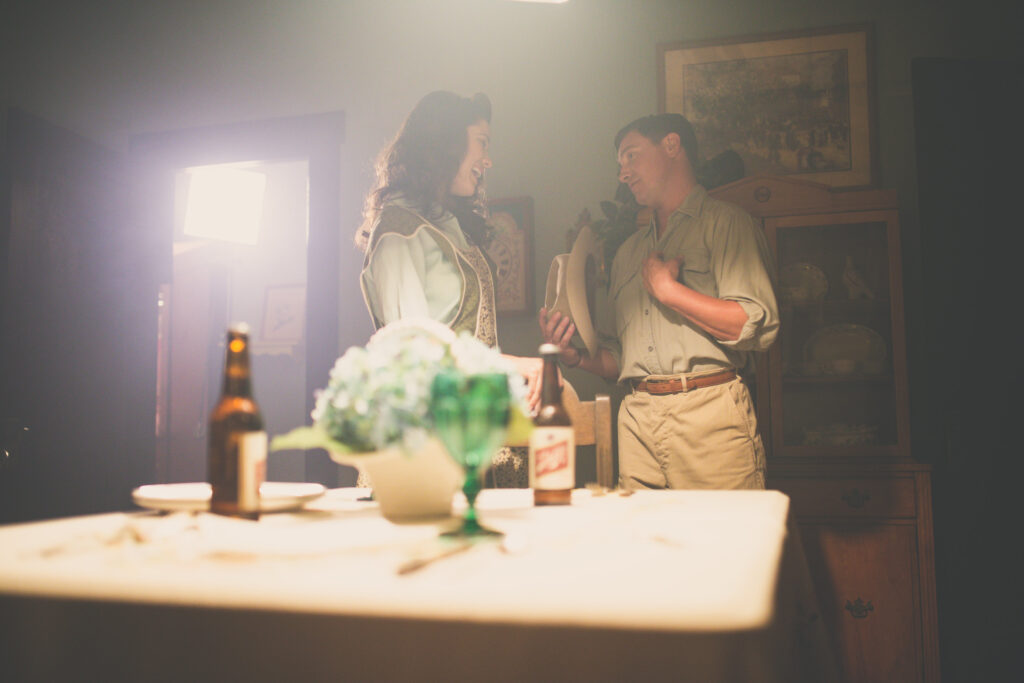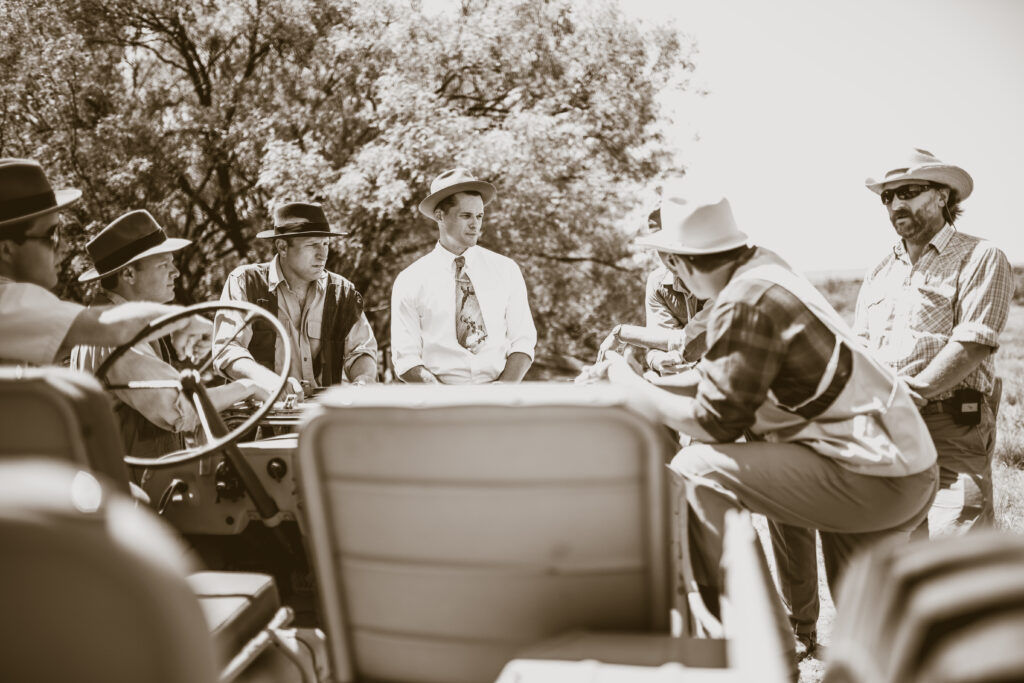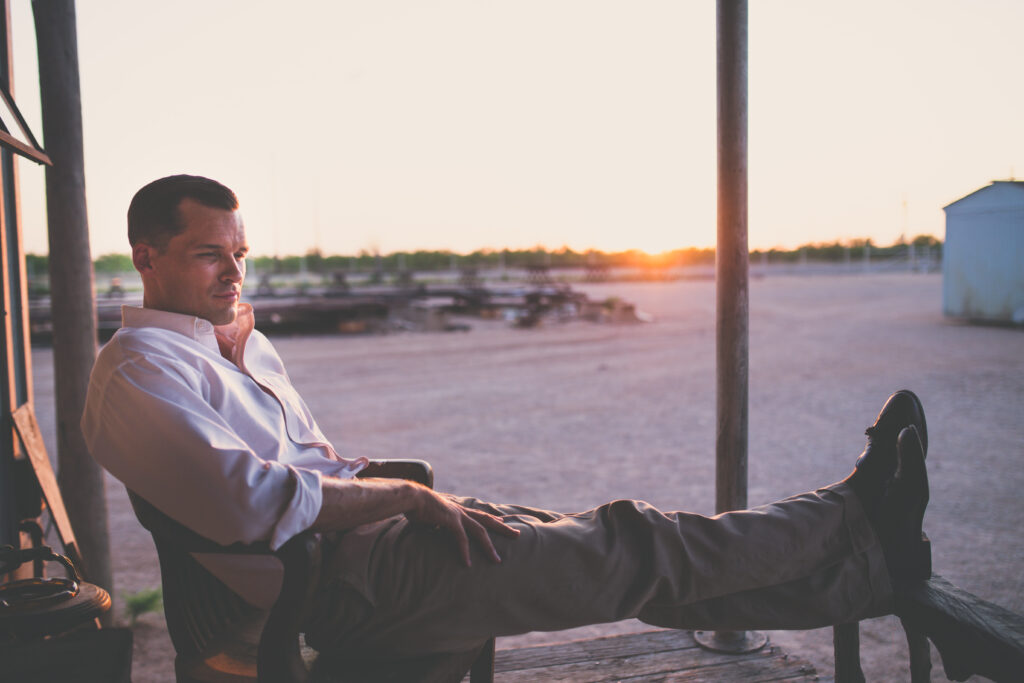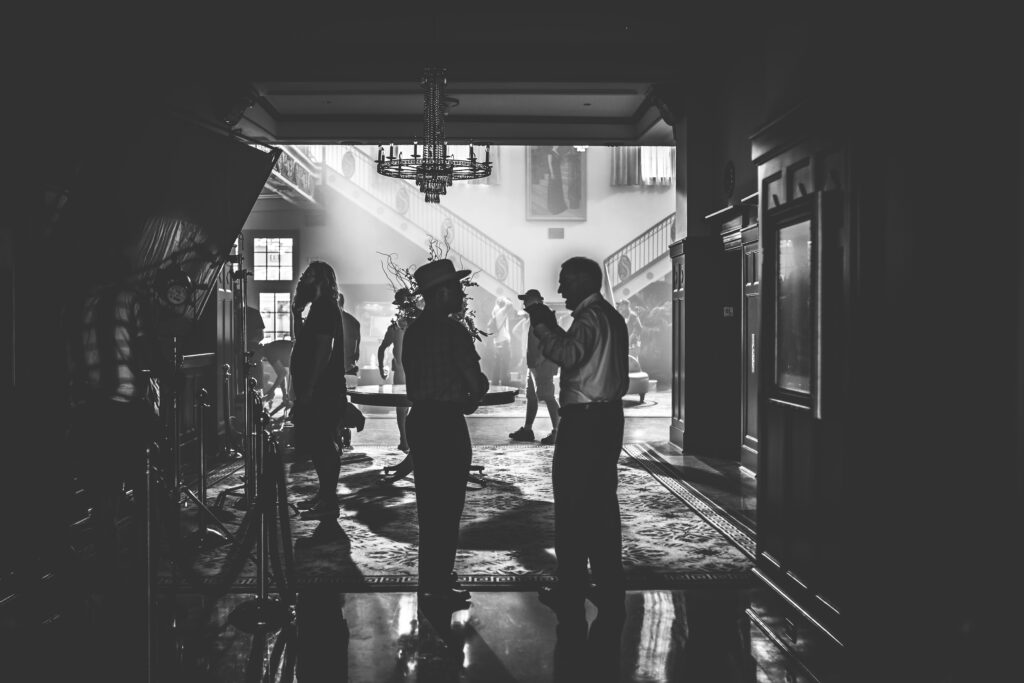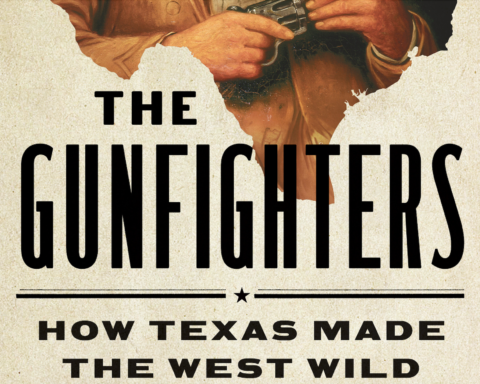With The Success Of The Paramount+ Series “Landman” This Film Captures The Texas Spirit
The film, The Iron Orchard, which took 52 years to finally be adapted from the award-winning novel, inspired Texas pride in viewers across our state and beyond our border. Here, our cineaste Lance Avery Morgan, who also appears in the film, shares his insight on the Texas-sized endeavor.
Photography by Zach Campbell and Mathieu Plainfossé
THOSE SONS OF RICHES
The Iron Orchard, which premiered at the Dallas Film Festival, waited over five decades for its big screen debut since the eponymous book debuted to much fanfare. Yet the book’s impact dissipated as fast as it rose to acclaim. Intriguingly, when the story raised its mighty Texas head during its film adaptation, we knew we had to learn more and little did we know, the ties that bound us to it unfurled like a lasso on a dusty plain. Talk of turning The Iron Orchard into a film, a saga of the days of Texas lore, had been bubbling for years. But with fits and starts, movie rights licensed, and rights expired, the dream wasn’t realized until 2018. And, we when were asked to join on set, we couldn’t turn down the opportunity.
In 1966, the 1930s-era book won the Texas Book of Letters fiction award, along with Larry McMurtry’s The Last Picture Show, the lusty and highly libidinous (for the era) coming-of-age story also set in West Texas. The latter appeared on the world’s movie screens in 1971 and not only became a hit, but an enduring Texas cult classic. Sixties heartthrobs Paul Newman and George Peppard were reportedly interested in starring in The Iron Orchard film after the book was initially published. Either would have done a fine job, but the timing just wasn’t right. Meanwhile, the story was left on a shelf to be rediscovered by later generations.
If ever you could judge a book by its cover, it’s this one. An oil derrick looms behind its master, the protagonist Jim McNeely. The back of the original paperback (long out-of-print and extremely rare to find) beckons the reader into the world of the Giant-esque Texas of not too long ago:
What does it take to satisfy a man like McNeely? He wants oil. And he’s wringing it from the sullen, resisting earth. He wants a woman. And he takes it from a man who can’t handle her. He wants respect. And he wins it with his fists, with his money, with his guts and brains. Soon to be a major motion picture.
THE GREATEST SHOW ON WORTH The major motion picture never came to pass, until now. “As a native Texan, I’ve never been prouder of anything more in my life than this film,” revealed actor Lane Garrison who plays the protagonist Jim McNeely.
The film stays impeccably true to the tome. Simply put, The Iron Orchard spans three decades telling the story of McNeely, a kid from the wrong side of the tracks in a fictional city near Fort Worth. McNeely, who was orphaned in high school, finds that his girlfriend, Mazie, is reluctant to commit to a future with him. Naturally, in that pre-war time period, Mazie’s affluent parents do not approve of the relationship, and they end up “helping Jim out” by getting him a job as an oilfield hand in the barren fields of West Texas.
The exhausting work among the brutal elements, with a boss who relentlessly pushes him to toughen up to survive the harsh industry, fuels Jim McNeely to climb the ranks and earn the respect of the crew. Violent confrontation and juicy romantic intrigue ends Jim’s time in the fields and compels him to Odessa to start a small oilfield equipment service company with his new wife, Lee. After navigating the rough waters of the business and life in general, Lee and Jim move back to his hometown where he becomes a formidable wildcatter. The stakes are higher, the drama is more intense, and a cast of unforgettable characters (most notably his old oilfield comrades, Ort Cooley and Dent Paxton) makes the adventure even richer.
The book, set in what now must seem like a different planet to those who were there then, is rife with not-so-politically-correct moments, especially in regard to how the characters talked about women, people of color, and the disabled. However, while these moments were cringe-worthy, they were also a profound reflection of the times and certainly added some authenticity to the novel. “When I read the book, it really spoke to me. The similarities between my life and McNeely’s are parallel,” confided Garrison. “I was also orphaned at an early age, didn’t have a college education, and we have both been motivated in our careers by feelings of inadequacy,” he admits, resonating with McNeely’s search for a prize few are lucky to find.
The author, Tom Pendleton, a pseudonym of Edmund Pendleton Van Zandt, Jr., was a man of means from a prominent Texas family. He wrote the book under a pen name because he wasn’t sure how the public would respond to his expository insider account of faces and spaces that were surely recognizable to his milieu. According to the Texas State Historical Association, Van Zandt worked for oil companies in various capacities; as roustabout, oil scout, and foreign oil concession negotiator in Venezuela and London, so he knew his subject matter well. He returned to the United States in 1962 to become assistant to the president of the General American Oil Company of Texas in Dallas. In 1963 he joined the Fort Worth National Bank. As an executive at a bank with intimate knowledge of the biggest depositors of the era, some of his clients might have recognized themselves had they known Van Zandt loosely based his work on them.
Most who read the novel feel Van Zandt developed deep characters and wove an incredibly captivating story. At the beginning of many chapters, the author would write a few clever paragraphs about monumental moments or figures in the actual world of the oil industry during that particular time of the story. As Jim McNeely, the protagonist proclaims in the film, “Oil men want respect. And the only way to win it is by striking oil.” In addition to a great narrative about the oil patch and wildcatting, the reader also gets a high-level picture of the state’s lucrative industry during the late 30s, 40s, and 50s when the action takes place.
COUNTRY MOUSE, CITY MOUSE Fast forward to the present day, with the film production in the oil fields of Big Spring, which seems almost dead center of the West Texas it portrays so richly. I knew an investor or two in the movie and was instantly fascinated. Who wouldn’t be, with Giant among my top few proverbial “desert island” films? Producer JK Baxter shared the excitement by musing, “I have worked in the oil and gas industry for many years. Based on my own personal experience, I have observed the rigors of this industry and its vicious boom and bust cycles. Plus, Lane Garrison perfectly captures the Jim McNeely character in this rags-to-riches-to-rags story of agony and despair. An amazing cast supports him.”
The citified scenes, far from the dusty expanse of towering oil rigs, would be shot in Austin. I arrived to the set during the final days of the 26-day shoot that had taken West Texas by storm. I received a call from producer JK Baxter, who had previously informed me of the location shooting during the Texas Film Awards. She put me in touch with another of the film’s producers, Camille Scioli Chambers, who was thrilled to have me, our Senior Social Editor Rob Giardinelli, and dear decades-long friend Leanne Raesener be a part of the movie-making magic for a couple of days. “To be a female producer on a male-driven film is a rare experience,” shares Camille Scioli Chambers. “Everyone loves the universality of the film. It’s epic. It’s the film of which I am most proud.”
After getting to know the production team and especially the film’s costume designer, Juliana Hoffpauir, I knew that attention to detail in the period 1947 film would be perfect. Hoffpauir (a childhood friend of the film’s director Ty Roberts), who had most recently costumed NCIS: New Orleans and before that, ABC’s period TV series Astronaut Wives, was emphatic about the specific details needed to capture the era. After all, the world was coming out of a major war, and the 50s’ heavily pinked and turquoise future was years away on the horizon. “I resourced from the era’s images of my grandmother and great-grandmother when researching the film,” shares Hoffpauir. “A period film is always challenging, yet places like The Cat’s Meow vintage in Midland, Dolly Python in Dallas, and the San Marcos Costume Company in McKinney were so wonderful.” She goes on to say, “This film is a reminder of why I wanted to be in the movies in the first place – it’s all a group effort. Every single person made the engine run on this one.”
The location itself in Austin, The Bellevue, was built in 1874 and served as a grand residence until it became the headquarters of the Austin Women’s Club in 1929 and, afterward, the Junior Austin Woman’s Club since 1940. The downtown European-style limestone-laden manor is now often overlooked because of the lush tree canopy that envelops it, yet once inside, it’s like time has stopped.
Plush, velvety furniture, noble portraits, and dark wooden moldings lend an aristocratic air to what represented conspicuous wealth in days gone by. The atmosphere perfectly replicated a sumptuous new money house-that-wants-instant-pedigree of the film’s male lead character Jim McNeely, played by Lane Garrison. Because it’s always a small world in Texas, I’d previously interviewed Garrison while he was working on the Fox series Prison Break in Dallas, as well as his fellow actor in the film, Austin Nichols, an Austin native featured in The CW’s One Tree Hill. They were actors on the rise and rise they certainly did. Among other projects, Garrison won rave reviews and was nominated for a Critics Choice Award in the Roots re-boot and Nichols became a fan favorite in AMC’s The Walking Dead. So, reuniting with them both playing iconic Texas characters was a blast to see how they have expertly honed their craft in later years.
As Garrison tells me, playing Jim McNeely is a role the Texas native and actor believes he was born to play, so he researched it like no other role before it. “Five weeks before the film shot, I listened in to the conversations of the big wheels at Midland Country Club to learn more about my character,” shares Garrison. “Then, I got on a rig. I was absorbing the way they all talked and spoke about their world. There’s a big difference between the driller and the guy who funds it… ambition.” He goes on to tell me that he learned from Paul Newman by re-watching Cool Hand Luke. “It was boots on the ground, living in that culture, and I ate it up for the role.”
Another leading character in the movie is Texas. Much like Lonesome Dove, Slacker, and other films that portray a bigger-than-life state like it is near the epicenter of whatever cultural zeitgeist is captured, the film was beckoning to be made.
MR. SUCCESS “I came across the book thanks to my father, who worked in the oil business over 55 years,” recalls director Ty Roberts. “One of his friends bought the rights and wanted to make a movie. Upon reading the novel, I knew there was a very special story in there, one that told the story of the independent oil man in a very true-to-life way. One I had witnessed personally. Jim McNeely’s story was partially that of my grandfather and father’s, so it became a very personal journey for me… fortunately, one that a lot of people supported thanks to the book, which is a rare find.” Roberts resuscitated the project from darkened bookshelves to bring the story to the light of the silver screen. “With this remarkable cast we have on board, I am excited to bring this larger-than-life Texas story to the big screen.”
The book, certainly exemplary of the writing style of the time, has a Western voice that is often peppered with a plethora of reckons, gits, gonnas and ain’ts. As we know in retrospect, education levels were not nearly as high then as they are now. The rise of Texas as a vastly agrarian state, then more so than now, was similar to that of a Sinclair wildcatter. Indeed, the voluminous Sinclair fields of lore in Texas are reflected fictionally in the book as Bison Oil Company, the great octopus of the oil industry.
The high get-it factor of Roberts and his team is palpable. When the little-known song by Frank Sinatra, Mr. Success, appears in the film, there’s a high moment, one of many, when the story of rags to riches is embodied by the timeless story that is interwoven within the fabric of the bone marrow of Texas. “I’d love for The Iron Orchard to not only be revered as a quintessential Texas film, but to also be a window into a time and place that is rarely seen on screen,” shares one of the film’s producers Houston Hill. “That’s why we spent so much time on every little detail, from the period cars to the texture of the oil. We knew we were capturing more than just one man’s story. We were also preserving a significant part of Texas history.”
It takes a village to raise a film project, and the similarities to funding an oil venture and a film venture are eerily close. Both take talent and luck, and the talent was abundant and ever-present in getting this film made. Gerry de Leon painstakingly adapted the Pendleton novel, while Houston Hill, Camille Scioli Chambers, and George Sledge produced the project under Santa Rita Pictures. Greg McCabe and Brint Ryan serve as executive producers. Ryan, one of the film’s biggest supporters, is the wealthy corporate tax consultant who restored his hometown’s Settles Hotel. The venue was built in 1930 as a luxe monument to Big Spring’s first oil bonanza that never realized its full potential. The crew used the lavish hotel location for five weeks, with other scenes shot at Midland’s Petroleum Museum and in Elgin, as well as the Austin locales.
All the Way actor Ned Van Zandt, the son of the author, has a role in the film, so it’s a truly full-circle moment for the project, which is so uniquely Texan. As Ty Roberts puts it, “For a New Yorker or Californian, Texas is like moving to a new and burgeoning place. Having that rough and rowdy mystique about it is definitely a draw. I truly want to honor that part of our history and hope others will see its value much like they did with Giant, Hud, or The Last Picture Show — some of the great films about Texas and its culture.” The prophecy may come true since the film has already garnered major global attention by winning accolades from the Milan, Madrid, and Santorini International Festivals, and in October, it will debut at the Austin Film Festival.
The author Edmund Pendleton Van Zandt, Jr. would never write another novel as iconic to Texas as The Iron Orchard. Hodak, a novel set in South America, was published in 1969, and Seventh Girl was published in 1970. Although those efforts didn’t have quite the heft of The Iron Orchard, we’re thrilled to have this film adaptation of a fan favorite that captures the best – and yes, the worst – that this state can represent.

